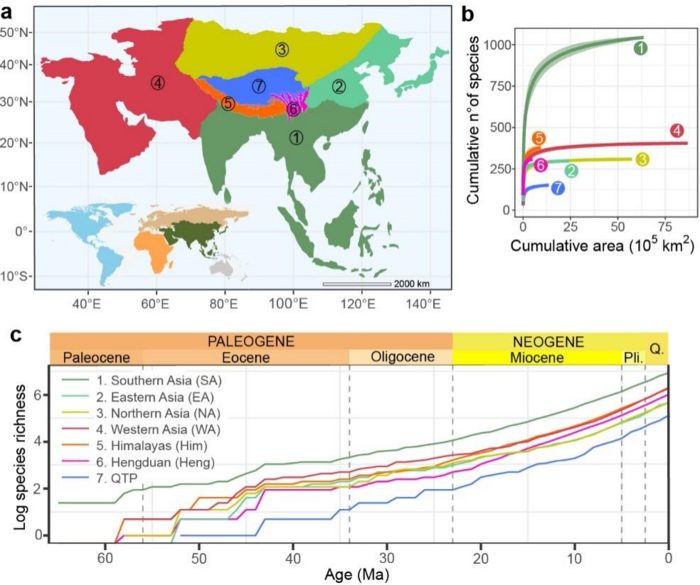Asia is home to a great many species as well as 14 of the globe’s 36 biodiversity hotspots. Its present biodiversity is assumed to be linked to diverse Cenozoic events, including very active mountain building and climatic changes. However, previous studies exploring the origin and timing of Asian faunas have mainly come from analysis at taxonomic or geographic scales and are too limited to offer a comprehensive view of biological evolution in this complex region.

Credit: Anderson Feijó
Asia is home to a great many species as well as 14 of the globe’s 36 biodiversity hotspots. Its present biodiversity is assumed to be linked to diverse Cenozoic events, including very active mountain building and climatic changes. However, previous studies exploring the origin and timing of Asian faunas have mainly come from analysis at taxonomic or geographic scales and are too limited to offer a comprehensive view of biological evolution in this complex region.
In a study published in PNAS on Nov. 28, researchers from the Institute of Zoology of the Chinese Academy of Sciences (CAS) and the Field Museum of Natural History in Chicago have investigated the range evolutionary history of 3,114 mammal species across Asia and adjacent continents to reveal how and when its rich biodiversity assembled across the continent’s regions and the montane hotspots flanking the Qinghai-Tibetan Plateau (QTP).
The researchers found that the tropical forests of South Asia, the main cradle of mammalian diversity in Asia, are a major center of diversity. The current high diversity in this region is mainly derived from in situ speciation, with limited influence from other Asian regions.
On the other hand, the Himalayas and the Hengduan Mountains, two hotspots surrounding the QTP, are mainly accumulation centers, suggesting that their modern biota is dominated by lineages that migrated from other regions.
This study also revealed that periods of active tectonic events, mountain building, and dramatic climate change (e.g., aridification of the Asian interior, sea retreat, intensification of Asian monsoons) have amplified the regional diversity of Asian mammals and intensified migrations across the continent.
Overall, the Neogene was marked by great diversification and migration across Asia and the surrounding continents, but Paleogene environments already hosted rich mammal assemblages.
This work was supported by the Second Tibetan Plateau Scientific Expedition and Research Program, the National Natural Science Foundation of China, the President’s International Fellowship Initiative of CAS, and the National Science and Technology Basic Resources Survey Program of China.
Journal
Proceedings of the National Academy of Sciences
DOI
10.1073/pnas.2207845119
Method of Research
Meta-analysis
Subject of Research
Not applicable
Article Title
Mammalian diversification bursts and biotic turnovers are synchronous with Cenozoic geoclimatic events in Asia
Article Publication Date
28-Nov-2022




